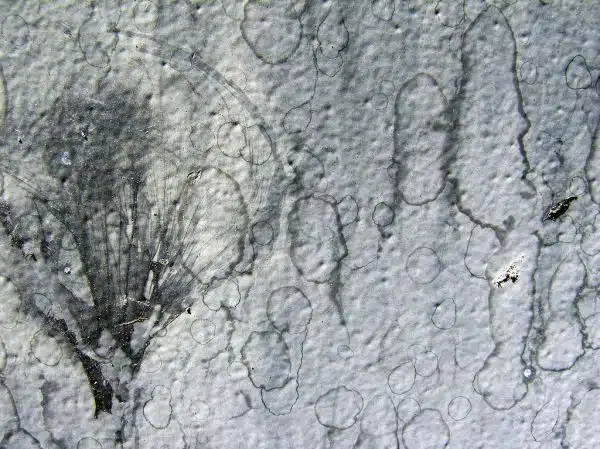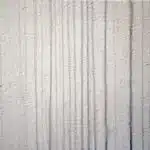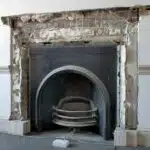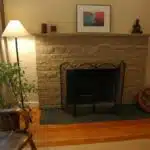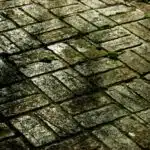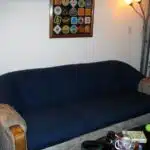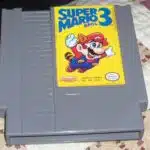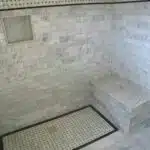Cleaning soot off of walls can be a daunting and frustrating task for many homeowners. Soot is often caused by the incomplete combustion of fuels such as wood, oil, and gas, resulting in black or gray flaky deposits on walls, ceilings, and other surfaces. Not only does soot make your walls look dirty and unappealing, but it can also pose health risks to you and your family.
As a professional cleaner/housekeeper, I have encountered numerous cases of soot buildup on walls over the years. In my experience, it is essential to approach this task with the right tools, techniques, and cleaning products to ensure that the job is done correctly without causing any damage to your walls or harming yourself. In this article, I will provide you with a step-by-step guide on how to clean soot off of walls effectively while keeping your home safe and healthy.
Understanding Soot And Its Risks
Soot is the fine black powder that remains after incomplete combustion of materials such as wood, coal, and oil. It can accumulate on walls, ceilings, and other surfaces in homes with fireplaces or furnaces. Soot poses a health risk when it is inhaled as it contains harmful particles that can cause respiratory problems. In addition to this, soot is also known to contain toxic chemicals such as benzene and formaldehyde.
To prevent the buildup of soot in your home, it is essential to have proper ventilation systems installed. Regular cleaning of chimneys and furnaces can also help reduce the amount of soot produced. When using candles or any other sources of open flames indoors, make sure that they are placed away from walls and other combustible materials.
It is crucial to take precautions when dealing with soot to avoid inhaling it or coming into direct contact with it. Wearing gloves, goggles, and a face mask can protect you from exposure to its harmful particles. Proper cleaning techniques are also necessary to ensure that all traces of soot are removed from surfaces without causing damage or spreading it around the area being cleaned. With these preventive measures in place, you can safely clean soot off your walls without risking your health or damaging your property. To prepare your cleaning area for removing soot from walls…
Preparing Your Cleaning Area
Clearing the Workspace is essential before cleaning soot off walls. This involves removing any furniture, decorations, or objects that may obstruct your work area. A clean workspace creates an efficient and safe environment for you to perform your tasks. You can either move these objects to another room or cover them with plastic sheets to protect them from soot fallout.
Protective Gear is also necessary when cleaning soot off walls. Wear a mask that covers your nose and mouth to prevent inhaling soot particles into your lungs. Soot can cause respiratory problems and even lung cancer if inhaled repeatedly over long periods. Additionally, wear gloves to protect your hands from the harsh chemicals in cleaning agents that you will be using.
Now that you have cleared the workspace and put on protective gear, it’s time to gather the right tools and materials for the job at hand.
Gathering The Right Tools And Materials
Choosing appropriate cleaning materials is crucial to effectively remove soot from walls. For this task, you will need a bucket of warm water, white vinegar, baking soda, a sponge or cloth, and rubber gloves. Avoid using abrasive materials that can damage the wall’s surface or paint. If the soot stain is particularly stubborn, you may need to consider purchasing specialized cleaning products for smoke and soot removal.
Safety precautions are also essential when cleaning soot off of walls. Wear rubber gloves to protect your hands from any chemicals used in the cleaning process. Ensure that the room is well-ventilated by opening windows or using fans to prevent inhaling harmful fumes. Avoid mixing different cleaning agents as it can produce toxic fumes.
To evoke emotion in our audience, we recommend considering the following sub-lists:
- Think about the positive impact of a clean home on your family’s health and well-being.
- Imagine how good it would feel to have a fresh-looking living space again.
- Consider how tackling this task now can save time and money in the long run by preventing further damage to your walls.
By following these tips on choosing appropriate cleaning materials and taking necessary safety precautions, you’ll be able to proceed with confidence when removing soot stains from your walls. The next step is testing the cleaning solution on an inconspicuous area of the wall before proceeding with the full cleaning process.
Testing The Cleaning Solution
According to a recent study conducted by the National Fire Protection Association (NFPA), more than 50,000 residential fires caused by heating equipment and other sources lead to an increase in soot accumulation on walls. Cleaning soot off of walls can be a challenging task, but it is essential to maintain the aesthetic appeal of your home or office space. The first step in cleaning soot off of walls is gathering the right tools and materials.
Once you have your tools and materials, it’s time to test the cleaning solution on a small area of the wall before applying it to the entire surface. Testing effectiveness is crucial since some cleaning solutions may damage or discolor walls, especially if they contain harsh chemicals. Safety precautions should also be taken during testing as some cleaning solutions may emit fumes that can cause respiratory problems when inhaled.
To start with dry cleaning methods, use a vacuum cleaner with a soft brush attachment to remove loose soot particles from the wall’s surface. Be gentle during this process to avoid smudging and spreading soot stains further. You can also use a dry sponge or magic eraser to clean light soot stains. Once you have completed these steps, proceed with wet cleaning methods such as using soap and water or specialized cleaners that are safe for your wall type. Remember always to test new products before using them on larger areas of your wall.
Starting With Dry Cleaning Methods
- Vacuuming is an effective method for removing soot from walls. It is important to use a vacuum with a soft brush attachment to ensure that the delicate surface of the wall is not damaged.
- Dry sponging is another option for removing soot from walls. It is important to use a damp sponge, rather than a wet one, to avoid spreading the soot further.
- Before beginning either of these cleaning methods, it is important to dust the walls beforehand to remove any surface dirt.
- After the soot has been removed, it is important to wash the walls with a mild detergent and water to ensure that all residue has been removed.
Vacuuming
When it comes to removing soot from walls, starting with dry cleaning methods is always the best approach. One of the most effective ways to remove soot from walls is by using a vacuum. However, it is important to be cautious as using a vacuum can cause damage to the wall if not done correctly.
To begin, choose a vacuum with a soft brush attachment that will gently remove the soot without causing scratches or other damage to the wall. Before using the vacuum on the entire wall, test it out on a small, inconspicuous area to ensure that there is no damage. It’s also important to use short strokes and avoid pressing too hard on the wall while vacuuming.
While vacuuming, make sure to pay extra attention to areas where there is more soot buildup such as near fireplaces or wood stoves. Additionally, it’s essential to empty the vacuum bag frequently during this process as excess debris can cause clogs and reduce suction power. By following these tips, you can effectively remove soot from your walls without causing any damage in the process.
Dry Sponging
When it comes to removing soot from walls, dry cleaning methods are always the best approach. In addition to using a vacuum, another effective way is by using a technique called dry sponging. This method involves using a special sponge that is designed to attract and remove soot particles without the need for water or other cleaning solutions.
One of the benefits of dry sponging is that it can be used on all types of walls, including those made of delicate materials such as wallpaper or plaster. Unlike wet cleaning methods, there is no risk of damage from excess moisture or chemicals. Dry sponging is also relatively quick and easy to do, making it an ideal option for those who want to clean their walls without spending hours scrubbing away at stubborn stains.
However, it’s essential to note that dry sponging has its limitations when it comes to heavy soot buildup. While it can effectively remove surface-level soot particles, deeper layers may require more thorough cleaning methods. Additionally, if not done correctly, dry sponging can cause scratches or other damage to the wall’s surface. Therefore, it’s important to use caution and follow proper techniques when attempting this method.
Using Sponges And Erasers
When it comes to cleaning soot off walls, sponges and erasers can be incredibly useful. However, not all sponge types and eraser brands are created equal. It is important to choose the right tools for the job to avoid damaging your walls.
There are two main types of sponges that are effective for cleaning soot: dry sponges and wet sponges. Dry sponges are made from rubber, and they work by attracting soot particles with their static charge. Wet sponges, on the other hand, require water to work effectively. They can come in a variety of materials such as cellulose or natural sea sponge. When using a wet sponge, be sure to wring it out thoroughly before use to prevent excess water from damaging the wall.
Eraser brands like Mr. Clean Magic Erasers or Scotch-Brite Erasers can also be effective for removing soot stains from walls. These erasers work by creating friction against the surface of the wall, which removes dirt and grime without causing damage. However, be cautious when using erasers on painted walls as they can sometimes remove paint along with the soot.
- Always test a small area first before tackling a large section
- Use gentle pressure when scrubbing with a sponge or eraser
- Avoid using abrasive materials that could scratch or damage your walls
- Wear gloves to protect your skin from chemical irritation
Next up is trying out chemical cleaners to see if they work better than sponges and erasers. While these methods are effective in many cases, sometimes tougher stains require stronger solutions. It’s important to take caution when using chemicals though as they can cause harm if not used properly.
Trying Out Chemical Cleaners
- Chemical cleaners come in a variety of forms, from creams and pastes to liquids and sprays, and each one is designed to tackle specific cleaning challenges.
- Before using any chemical cleaner, it is important to take safety precautions such as wearing gloves and protective eyewear, and ensuring that the area is well-ventilated.
- When cleaning soot off of walls, it is recommended to begin with a mild cleaner and gradually increase the strength of the cleaner if the soot does not come off easily.
- Care should be taken to avoid using strong chemical cleaners on painted walls, as they may cause discoloration or fading.
Types Of Chemical Cleaners
When it comes to cleaning soot off of walls, chemical cleaners can be a powerful tool in your arsenal. However, with the variety of chemical cleaners available, it can be difficult to determine which one is best suited for the job. There are several types of chemical cleaners that you should consider, each with their own effectiveness and safety precautions.
One type of chemical cleaner that is commonly used for removing soot is an alkaline cleaner. These cleaners have a high pH level and work by dissolving dirt and grime. While they are effective at removing tough stains, they can also be harsh on surfaces if not used properly. It is important to follow the manufacturer’s instructions carefully and avoid using them on delicate surfaces.
Another type of chemical cleaner that you may consider is an acidic cleaner. These cleaners have a low pH level and work by breaking down mineral deposits and rust stains. They are particularly effective at removing stubborn stains caused by burnt wood or coal. However, they can also be corrosive if used incorrectly, so it is important to wear protective gloves and goggles when using them.
If you are looking for eco-friendly alternatives to chemical cleaners, there are several options available as well. For example, you could try using baking soda and vinegar to create a paste that can be applied to the affected area. Alternatively, you could use steam cleaning or pressure washing to remove the soot without the use of chemicals. Regardless of which method you choose, always remember to prioritize safety and read all instructions carefully before starting any cleaning project.
Safety Precautions
When trying out chemical cleaners for cleaning soot, it is important to prioritize safety precautions. As a professional cleaner/housekeeper, one should always be aware of the potential risks of using chemical cleaners and take steps to protect themselves and those around them. One of the most important safety precautions is ensuring proper ventilation during the cleaning process. This will help to prevent the buildup of harmful fumes that can be dangerous if inhaled.
In addition to proper ventilation, it is also essential to wear protective clothing and gear when using chemical cleaners. This includes gloves, goggles, and a face mask if necessary. Chemical cleaners can be harsh on skin and eyes if they come into contact with them, so it is important to take all necessary precautions before beginning any cleaning project.
Overall, while chemical cleaners can be effective at removing stubborn stains like soot, it is crucial to prioritize safety when using them. By ensuring proper ventilation and wearing protective clothing and gear, you can reduce the risk of harm to yourself or others during the cleaning process.
Dealing With Tough Stains
Understanding stains is crucial in order to remove them effectively. There are various types of stains that can be found on walls, such as grease, crayon marks, and ink stains. Each type of stain requires different cleaning techniques and products. It is important to identify the type of stain before attempting to clean it.
Removing stains effectively starts with using the right cleaning solution. There are many commercial cleaners available in the market that are specifically designed for removing tough stains from walls. However, if you prefer using natural solutions, a mixture of baking soda and water can do wonders on most types of stains. Simply mix equal parts of baking soda and warm water until it forms a paste-like consistency then apply it onto the stained area with a cloth or sponge.
For stubborn stains that won’t come off with simple solutions, it may be necessary to use more aggressive methods such as sanding or repainting the affected area. However, before resorting to these measures, it is recommended to seek professional advice or assistance from a painter or cleaner. With proper understanding and knowledge on how to tackle different types of stains, removing them from walls can be an easy task.
| Type of Stain | Recommended Cleaning Solution |
|---|---|
| Grease | Dish soap mixed with warm water |
| Crayon Marks | Baking soda paste |
| Ink Stains | Rubbing alcohol |
Transitioning into the subsequent section about ‘rinsing the walls’, once the cleaning solution has been applied onto the stain and left for an appropriate amount of time, it is important to rinse off any remaining residue from the wall surface. Leaving any cleaning solution on for too long may cause damage or discoloration to the wall paint or finish. In order to properly rinse off any residue, use a clean damp cloth or sponge in circular motions until all traces of cleaning solution have been removed.
Rinsing The Walls
As the soot begins to disappear from your walls, you may feel a sense of relief and satisfaction. However, it is essential not to overlook the final step in the cleaning process: rinsing the walls. Rinsing is an important part of cleaning as it helps to remove any remaining cleaning agents and impurities from the surface.
One of the benefits of rinsing is that it ensures that no cleaning solution remains on your wall’s surface. Residual cleaning solutions can cause discoloration or damage to the walls over time. Additionally, rinsing allows you to see if there are any spots where soot has been left behind.
When rinsing, it is crucial to take safety precautions such as protecting yourself with gloves and goggles. Also, ensure that electrical outlets are covered or taped off before wetting your walls. You can rinse your walls using a bucket filled with clean water or use a spray bottle if you’re only dealing with small areas. Whichever method you choose, make sure to change out the water frequently to avoid spreading soot around your home.
As you finish up rinsing, be sure not to leave any standing water on the surfaces. A damp cloth or towel can be used for wiping down any excess water from your walls before proceeding with drying them thoroughly. With this last step completed correctly, you’re ready to move onto drying so that your walls look new again!
Drying The Walls
After cleaning the walls, it is important to dry them thoroughly. Drying the walls will prevent any water stains or damage to the wall’s surface. There are several wall cleaning techniques that can be used to effectively dry your walls.
One effective technique is to use a clean towel or cloth to gently pat the wall dry. It is important not to rub the wall, as this can damage the surface and cause further issues. Another technique is to use a fan or air conditioning unit to circulate air around the room and help speed up the drying process.
If there are any remaining water stains on the walls after they have dried, you can try using a mixture of equal parts white vinegar and water. Apply this solution with a clean cloth and gently blot at the stain until it fades away. If this does not work, there are specialty products available for removing water stains from walls.
Inspecting for any remaining soot on your walls is an important step in ensuring that your cleaning efforts have been successful. By following these steps for drying your walls, you will be able to effectively remove all traces of soot and prevent any long-term damage to your home’s surfaces.
Inspecting For Any Remaining Soot
Inspection techniques are important for ensuring that all the soot has been removed from your walls. After cleaning, inspect the walls thoroughly to check if there is any remaining soot. You can use a flashlight to look at the walls from different angles and determine if there are still any black or brown spots on them. If you find any residue, then it is important to remove it immediately.
Removing stubborn soot can be challenging, but it is necessary to ensure that all of it has been removed. One technique for removing stubborn soot is to use a mixture of warm water and vinegar. Dip a clean cloth into this solution and gently rub the affected area until the soot comes off. If this does not work, try using a gentle soap and water solution instead.
It is crucial to ensure that all of the soot has been removed from your walls before moving on to preventing future buildup. Failure to do so could result in more significant problems later on. Once you have inspected and removed any remaining soot, you can begin taking steps to prevent future buildup by cleaning regularly and avoiding burning candles or fires in enclosed spaces. By doing this, you will be able to maintain a clean home and avoid future issues with soot buildup.
Preventing Future Soot Buildup
Inspecting for any remaining soot is crucial in ensuring that the cleaning process has been successful. After cleaning the walls, it is important to check areas such as corners and edges to ensure no soot residue remains. Use a flashlight to illuminate these hard-to-reach areas and look for any signs of remaining soot. If there is still soot left, repeat the cleaning process until all traces of soot have been removed.
Preventive measures are essential in ensuring that your walls do not accumulate soot in the future. One way to prevent future buildup is by installing smoke detectors and ensuring they are working correctly. Regularly checking and replacing air filters can also help reduce the amount of soot that accumulates on your walls. Additionally, avoid burning candles or incense in enclosed spaces as they can contribute to an increase in soot buildup.
Maintenance tips can also help keep your walls clean and free from soot buildup. Dusting regularly with a microfiber cloth or vacuuming with a soft brush attachment can help reduce the amount of dust that accumulates on your walls. In addition, wiping down surfaces with a damp cloth every few weeks can help remove any residual dirt or stains before they become more challenging to clean.
Seeking professional help may be necessary if you are unable to remove soot from your walls using household cleaning products or if there is extensive damage to your walls due to fire or smoke damage. Professional cleaners have specialized equipment and knowledge necessary to restore your home’s interior surfaces after a fire or other disaster. Contact a professional cleaner if you need assistance with removing stubborn stains or restoring damaged surfaces caused by smoke or fire damage.
Seeking Professional Help
Hiring professional cleaners for soot removal from walls has its benefits and drawbacks. On the one hand, professionals have experience in handling different types of soot, including those that are particularly stubborn to clean. They also have access to specialized equipment and cleaning agents that may not be available for personal use. This can result in a more thorough and efficient cleaning process.
However, there are also drawbacks to hiring professionals. The cost of their services can be significantly higher compared to doing it yourself. Additionally, scheduling an appointment with them may take some time before they can accommodate your needs. Moreover, you may have concerns about the safety of your belongings while they work on your property.
When considering whether to hire professionals or do it yourself, it is essential to compare the costs of each option. DIY cleaning may seem cheaper at first glance since you only need basic cleaning materials, but this may not be enough for effective soot removal. On the other hand, professional services may come with a premium price tag but provide long-lasting results.
Overall, the decision to hire professionals depends on various factors such as budget and level of expertise in cleaning soot off walls. It is important to weigh both options carefully before making a decision. In the next section, we will discuss common mistakes people make when trying to clean soot off walls and how to avoid them for optimal results.
Avoiding Common Cleaning Mistakes
When it comes to cleaning, there are a few common mistakes that people tend to make. These mistakes can not only prevent you from achieving the desired results but can also cause harm to yourself or your property. Therefore, it is important to be aware of these mistakes and take necessary steps to avoid them.
One mistake that people make is using the wrong cleaning product for a particular surface. This can damage the surface or leave behind residue that is difficult to remove. It’s important to read labels carefully and use products as directed. Another mistake is not allowing sufficient time for the cleaning product to work its magic. Rushing through the process can result in incomplete cleaning.
Tips for ensuring a safe cleaning process include wearing protective gear such as gloves and goggles, especially when working with harsh chemicals or hot water. Additionally, always test a small area first before using any new product on a larger scale. Finally, always follow proper disposal methods for used cleaning products and materials.
In conclusion, by avoiding common cleaning mistakes and following these tips for a safe cleaning process, you will be able to achieve better results while protecting yourself and your property. With these guidelines in mind, let’s move on to some final tips on how to keep your home clean and organized.
Conclusion And Final Tips
After applying the cleaning solution and removing the soot from your walls, it’s important to give them a final touch up. This helps to ensure that all the residue and cleaning solution are removed from the walls. Use a clean cloth or sponge and rinse the walls thoroughly with clean water. Be sure to change the water frequently to avoid spreading any remaining soot on the walls.
To prevent future build-up of soot on your walls, it’s essential to implement regular maintenance tips. Keep your home well-ventilated by opening windows and doors regularly. Invest in an air purifier to help filter out pollutants from indoor air. Additionally, consider using candles less often or switch to natural alternatives like soy-based candles.
Incorporating these maintenance tips into your routine will not only keep your home looking great but also improve indoor air quality. By taking preventative measures, you can avoid having to tackle tough cleaning jobs like removing soot from walls again in the future. Remember, a little bit of upkeep goes a long way in keeping your home healthy and clean!
Conclusion
Soot is a common problem for homeowners, and it can be hazardous to your health if not cleaned properly. It’s important to understand the risks associated with soot and to take appropriate precautions when cleaning it from your walls. By properly preparing your cleaning area, gathering the right tools and materials, and testing your cleaning solution, you can effectively remove soot from your walls.
Dry cleaning methods such as vacuuming and wiping with a dry cloth are effective at removing loose soot particles. However, for more stubborn soot stains, a cleaning solution may be necessary. It’s important to test the solution on an inconspicuous area of the wall before using it on a larger surface. Preventing future soot buildup can also help keep your walls clean in the long term.
According to the National Fire Protection Association (NFPA), between 2014-2018, there were an average of 354,400 residential structure fires per year in the United States alone. These fires resulted in an annual average of 2,620 deaths, 11,220 injuries, and $6.9 billion in property damage. Properly cleaning soot off of walls can help prevent these devastating statistics from occurring.
As a professional cleaner/housekeeper, it is important to prioritize safety while effectively removing soot from walls. Taking proper precautions such as wearing gloves and a mask can help protect against potential health hazards associated with soot exposure. By using the appropriate tools and materials and avoiding common cleaning mistakes, you can ensure that your clients’ homes are safe and free from excess soot buildup.
Image Credits
- “Off white” by Eva the Weaver (featured)

